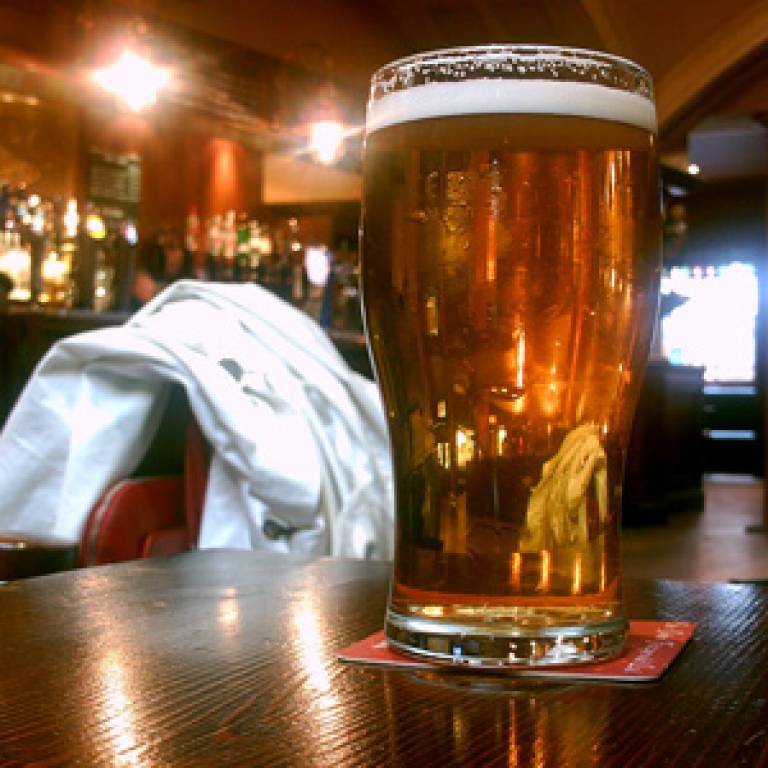Brain imaging study reveals what makes some people more susceptible to peer influence
28 April 2014
A brain area activated by group decisions can distinguish people more likely to conform to the will of a group, say researchers from UCL.

The team, led by Dr Tali Sharot (UCL Affective Brain Lab), monitored the brain activity of individuals in groups of five people choosing food or drink they'd like to consume before and after being told the most popular choice in their group.
The results showed that people were likely to conform to the most popular choice in their group if their original preference was different.
Caroline Charpentier (UCL Institute of Cognitive Neuroscience) said: "Most people don't think their everyday decisions, such as having eggs on toast for breakfast or a pint of lager at the pub, are influenced by other people's preferences."
She added: "But our results suggest that when other people make different choices than you, for example your friends order beer while you order wine, your brain records this information and this signal is mirrored in your brain later on, for example when you order another drink, making you more likely to choose beer, even if you initially preferred wine".
The team used functional magnetic resonance imaging (fMRI) to monitor the brain responses of 20 volunteers during a decision-making task, while 78 more volunteers completed the task simultaneously on computers located outside the MRI room. They came to the lab in small groups of five.
Our results suggest that when other people make different choices than you, for example your friends order beer while you order wine, your brain records this information and this signal is mirrored in your brain later on, for example when you order another drink, making you more likely to choose beer, even if you initially preferred wine.
Caroline Charpentier (UCL Institute of Cognitive Neuroscience)
In one session, volunteers were shown 60 pairs of food and drink items and asked to select which item of each pair they would prefer to consume at the end of the experiment. Straight after making this choice, the participants were told which item most people in their group selected. This part of the experiment provided the volunteers with social feedback.
Volunteers then took part in a following session a few minutes later, when they opted again for which item they would prefer to consume from the same series of pairs, but this time made the choice for themselves and did not receive any social feedback.
After the experiment, the participants completed a personality questionnaire that assessed trait conformity, which measures their general tendency to follow other people's ideas and behaviours. Comparison of results from the choice experiment and conformity questionnaire indeed showed that people who scored high on trait conformity were about twice as likely to change their food choices to agree with the group decision as people who scored low for conformity.
What differed between the brains of people who were more likely to conform and people who held on to their own opinion?
The imaging study showed that the orbito-frontal cortex (OFC) - a region at the front of the brain that has been associated with emotional and social behaviour - was active during the two choice sessions and distinguished between these two groups of people.
Miss Charpentier said: "The orbito-frontal cortex was the only region specifically activated, and the first area to react to group disagreement. This region was activated both at the time of the initial social conflict (when your friends all choose beer while you prefer wine) and also later when you make an individual choice (when you order another drink for yourself)."
The OFC has previously been associated with emotions and social behaviour. Some clinical studies have suggested that people with brain damage in the OFC may behave inappropriately in groups.
Miss Charpentier concluded: "When OFC activity during the initial social conflict is mirrored in your brain at a later time when you make an individual choice, you are more likely to change your choice and follow the group. This is what happens in 'high conformers'. In other words, it is the temporal dynamics of the OFC that distinguishes "conformers" from people who hold on to their own initial opinion".
Links
-
Research paper in The Journal of Neuroscience [Open Access]
- Dr Tali Sharot's academic profile on Iris
- UCL Institute of Cognitive Neuroscience
Image
- Beer glass (Courtesy of Tim Dobson on Flickr)
 Close
Close

